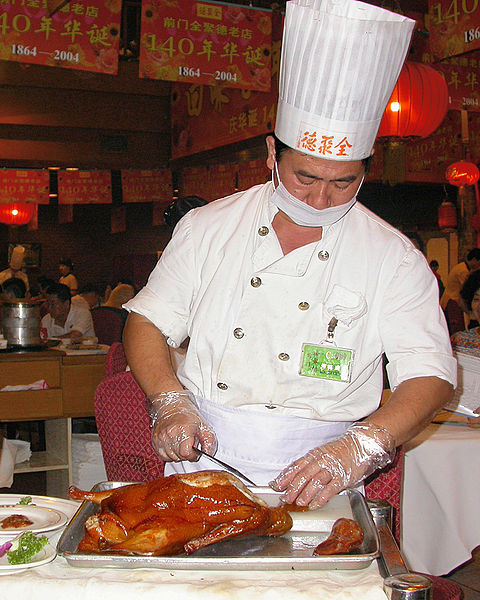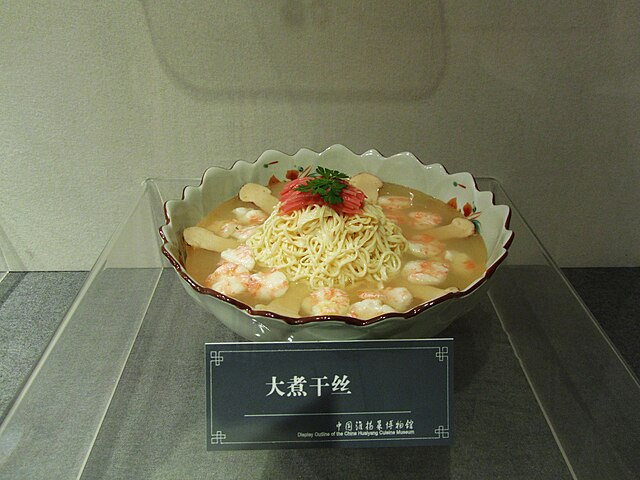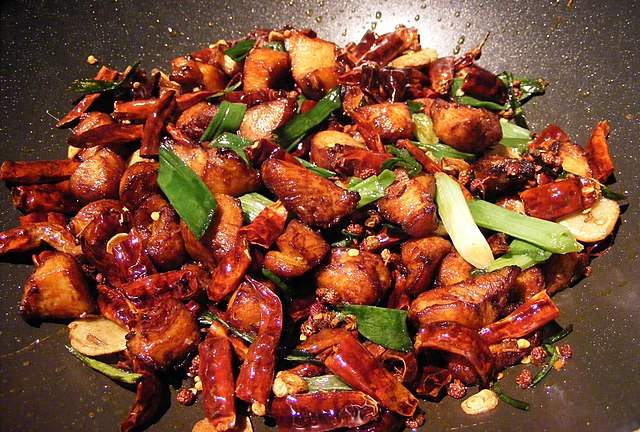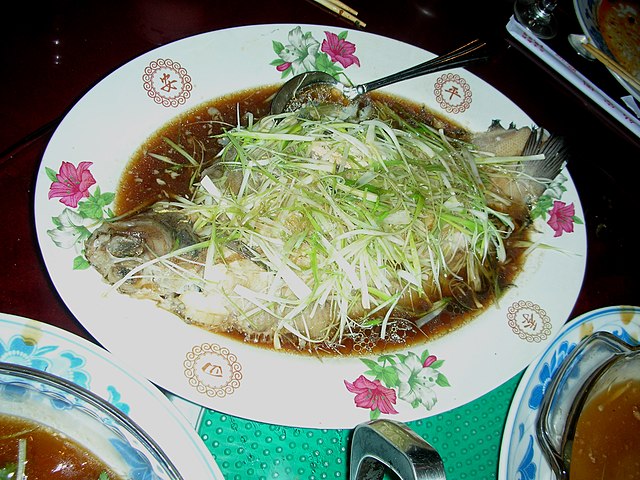Mongolian cuisine predominantly consists of dairy products, meat, and animal fats. The most common rural dish is cooked mutton. In the city, steamed dumplings filled with meat—"buuz"— are popular.
Khuushuur meat pies, buuz dumplings and boiled mutton
From smallest to largest: boortsog cookies, aaruul (dried curds), and ul boov cakes
Khorkhog
Boiled meat and innards; the most common meal in a herder's household
Chinese cuisine comprises cuisines originating from China, as well as from Chinese people from other parts of the world. Because of the Chinese diaspora and historical power of the country, Chinese cuisine has profoundly influenced many other cuisines in Asia and beyond, with modifications made to cater to local palates. Chinese food staples such as rice, soy sauce, noodles, tea, chili oil, and tofu, and utensils such as chopsticks and the wok, can now be found worldwide.
A Quanjude cook is slicing Peking roast duck. Peking duck is eaten by rolling pieces of duck with scallion, cucumber and sweet bean sauce using steamed pancakes.
Dàzhǔ gānsī is a typical soup dish of Huaiyang cuisine. It is made of finely sliced dried tofu, chicken, ham and bamboo shoot, and the ingredients need to be braised with shrimp in chicken soup. It was highly praised by the Qianlong emperor.
Làzǐ Jī, stir-fried chicken with chili and Sichuan pepper in Sichuan style
Steamed whole perch with roe inside. Sliced ginger and spring onion is usually spread on top.








